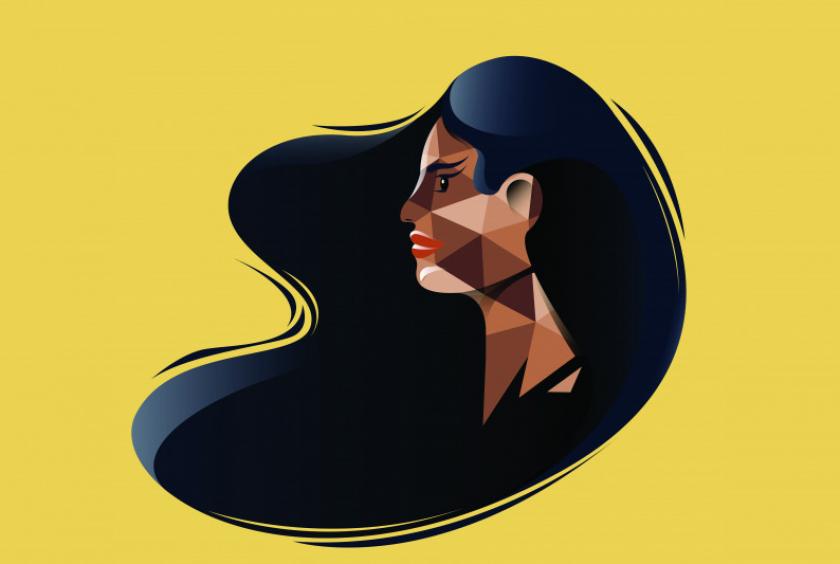Like racism, colourism is largely overlooked and dismissed in Nepal. Some Nepalis say society should start addressing it head on.
For as long as she can remember, Nipsha Dhungana has always been called ‘kali’ by her friends and family. For them, it was an endearing nickname. For Dhungana, the word was affecting her self-esteem.
“My aunt didn’t touch me for a month when I was an infant because I was so dark, and when I heard that, I thought it meant that I was ugly,” Dhungana said, recalling her childhood to the Post.
As a teenager, Dhungana struggled with accepting her natural skin tone and even today, at the age of 21, she admits that she sometimes cannot leave home without wearing makeup to look fairer.
Dhungana’s experience is fairly common for those with a darker skin tone in Nepal, especially among the hill communities. While ‘kaley’ or ‘kali’ is employed by friends and family as nicknames, their ubiquity sheds light on a deeper societal problem—the preference for fair skin. This predilection is apparent in the prevalence of fairness creams; marketing campaigns that promote fair skin; the use of derogatory slang on the basis of skin colour; and attitudes surrounding celebrities or public figures with darker skin.
When Nikita Chandak was crowned Miss Nepal in 2017, she faced immediate backlash from the public for not being fair enough, and was constantly told how her darker skin tone, along with the fact that she was from the Marwadi community, made her undeserving of the title.
“I was trolled for my appearance, and was called ugly and dark skinned. That affected my self-esteem,” Chandak said in an email interview. “Since I come from a Marwadi background, I was told that I was an Indian and I didn’t deserve to hold the title of Miss Nepal.”
Chandak was an anomaly in the history of the pageant’s winners, where almost all other title holders have been exceedingly fair. Many believe that Nepali beauty pageants reinforce fairness as a beauty ideal.
In an article published online, anthropologist and filmmaker Sachin Ghimire writes about how Nepali beauty pageants promote this ideal not only around skin fairness, but also caste and race, and argues that those factors “seem to be dominating the political colour of identity in beauty contests.”
Although it is difficult to trace the exact roots of the Nepali preference for fair skin, there are competing theories in India that ascribe this notion to the fair skin of early Mughal invaders, and later Portugese and British colonisers, according to a paper published in the Washington University Global Studies Law Review. British rule in India only cemented this fairness preference, which could have then made its way across the border into Nepal.
“Colourism has its roots in colonial mindsets, which can be equated with the Panchayat era in Nepal that set clear distinctions between who is considered Nepali and who is not,” said Kalpana Jha, a researcher whose work focuses primarily on the Madhes.
According to Jha, colourism in Nepal is heavily influenced by the government and bureaucracy, which is dominated by hill communities, who tend to look at darker Madhesis with suspicion and prejudice.
“Discrimination against Madhesis is heavily informed by a racist undertone. It extends beyond colour, to the language, dress and facial features. Caste discrimination is structural discrimination that has its roots in religion and notions of purity and impurity drawn from ones profession,” said Jha.
Consequentially, in present day Nepal, caste-based discrimination is still very much linked to colourism, as in the cases of Dalits and people from the Madhes.
According to a 2018 report by Nepal’s Civil Society on Caste-Based Discrimination and Untouchability against Dalits in Nepal, 42.5 percent of Terai/Madhesi Dalits earn their livelihood as blacksmiths, leatherworkers and tailors, based on their caste.
In addition to the caste system, elements in Hinduism are also believed to have reinforced attitudes surrounding colourism.
In his blog ‘Imagining White Gods: Colorism in Hindu Art’, Nikhil Mandalaparthy writes about how religious art depicting Hindu deities almost always portray them as fair skinned. In doing so, he gives the example of Krishna, who is supposed to have a dark complexion but is often depicted in modern calendar art with a lighter skin tone.
“Although these dark-skinned examples do exist, they are few and far between compared to light-skinned portrayals of Krishna. I would argue that the light-skinned conception of Krishna, popularized through calendar art, has become hegemonic, marginalizing the other portrayals of the god,” he writes.
But one of the most telling, and perhaps most consequential, example of how colourism has manifested in contemporary Nepali society is the prevalence of skin whitening creams, which continue to be advertised and sold using the imagery of a dark-skinned woman whose previously gloomy life turns around for the better after applying the cream and becoming fair-skinned.
Worldwide, the demand for skin-lightening products is surging, with the Asia-Pacific market making up more than half—an estimated $7.5 billion out of $13.3 billion—of the global market in 2017, according to Future Market Insights, which studies and forecasts markets in over 150 countries.
However, for Rita Lamichhane, who uses and sells skin whitening creams in her local shop, this statistic is not alarming. Lamichhane does not seem to believe that such creams can damage a person’s self-esteem.
“It’s never been a problem for me,” she said. “I’m glad we have these sorts of products because using them makes me look and feel better about myself.”
Skin lightening services and products are also offered in many beauty salons these days, finding an easy market in women more than men.
Binita, who asked to be identified only by her first name, undergoes chemical peeling procedures at Swasti Laser and Skin Care in Naxal, and admits that the procedure helps boost her confidence by making her look fairer.
“Although it takes a while to see any kind of difference, doing these procedures over time will improve my skin tone and complexion and help me look fairer,” she told the Post.
Colourism in Nepali society is also being perpetuated by people’s general attitudes and treatment of others. When a person casually refers to someone else as “kali or kaley” or “gori or gorey,” they fail to consider that they are identifying that person as a whole on the basis of a single element—their skin colour. Chandak believes that it has a lot to do with how one is brought up.
“The reason why we take things so lightly is perhaps because during their childhood years, if a girl or a boy is dark skinned, their nickname automatically becomes kaley or kali; if they’re fat, it becomes mote or moti, and if thin, lute or luti,” she said. “It gets generalised without understanding that these kinds of comments might be negatively affecting the person on the receiving end.”
Ghimire, the anthropologist, however, believes that the media plays an even sinister role in promoting and perpetuating these unrealistic standards and attitudes, especially in the context of beauty pageants.
“The standards created by the media have been accepted as the norm for many young women, and because the media prefers a certain type of skin over the other, many women do not even think they are eligible to participate in beauty pageants,” he writes in his article.
While many might believe that calling people with darker complexions kali or kaley is harmless, words matter for people like Dhungana, who has been, and continues to be, on the receiving end of comments regarding her appearance.
“This shouldn’t be an issue. People shouldn’t be stuck on things like skin colour and caste because there are bigger issues in this country,” she said.
A dialogue on colourism is especially necessary for people who are victims of discrimination, says Chandak.
“This issue should be discussed so that it becomes easier for victims to open up about their suffering so they can rise above it for their mental and social well being,” she said.
Today, colourism, like racism and other social constructs, is largely overlooked and dismissed in Nepal, but some, like Jha, believes the society should start addressing it on a structural level.
“Colourism largely informs the multi-layered disenfranchisement that exists among some communities as compared to others,” said Jha. “It needs to be addressed. It is perhaps more urgent and more important than we imagine.”
















